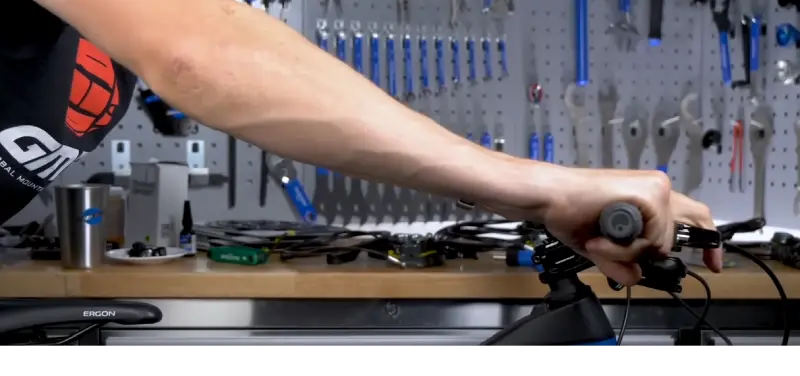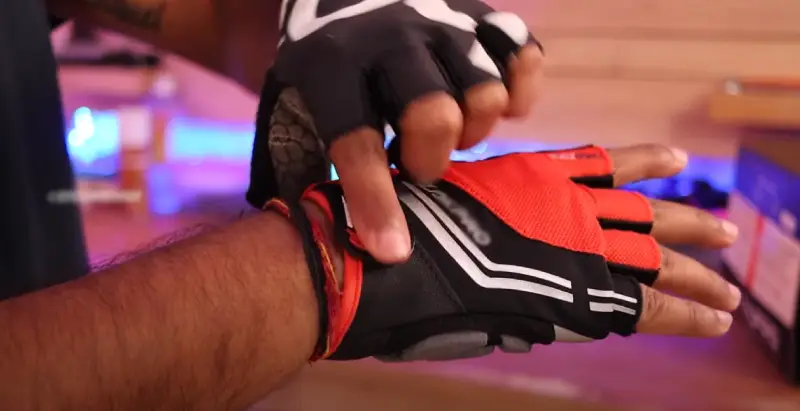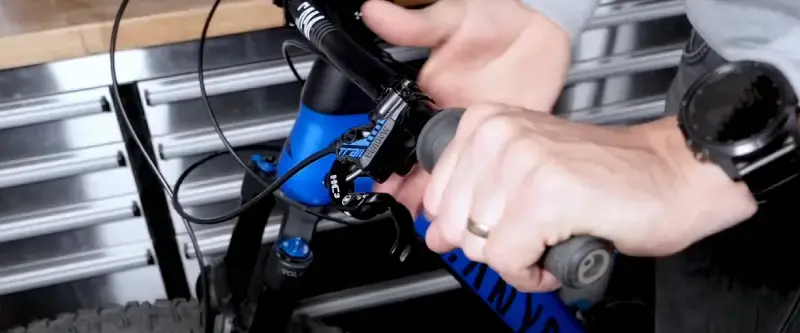At the base of the wrist, the ulnar nerve is compressed, causing wrist pain, numbness, and tingling in the hands for road cyclists. Excessive weight taken through the hands and wrists, or hyperextended wrists that put pressure on the nerve as it is compressed, usually cause this condition.
To ease wrist discomfort while cycling, try these adjustments. Consult your doctor for personalized guidance. Use padded cycling gloves to protect your palms from handlebar vibrations, reducing strain on your ulnar and median nerves. Do not bend your wrists while also bending your elbows.
We will examine different ways and tips for preventing wrist pain while cycling.
How to Avoid Wrist Pain While Cycling: 6 Setup Hacks

One of the most common complaints among cyclists is wrist pain, ranging from a mild inconvenience to a more severe and chronic condition. We will explore tips and strategies for avoiding wrist pain while cycling.
Proper Bike Setup
One of the most crucial steps towards avoiding wrist pain while cycling is to ensure that your bike is set up correctly for your body. This includes adjusting your seat, handlebars, and saddle height and position. A proper bike setup can distribute your weight more evenly across your body and reduce the strain on your wrists.
- Check your bike’s fit: Make sure your seat is hip height, and your handlebars are adjusted to suit your body.
- Dial in your bike fit: Consider seeing a professional to fine-tune your bike fit and ensure it’s optimized for your body and riding style.
- Check your saddle position: Ensure your saddle is level and at an appropriate distance from your handlebars.
- Look to your handlebars: Consider switching to handlebars that provide more support and reduce strain on your wrists.
Optimize Your Hand Positions
The way you hold and grip your bike can have a significant impact on your wrists. Taking steps to optimize your hand positions can help to reduce pain and discomfort.
- Wear padded cycling gloves: Choose gloves with adequate padding to reduce pressure on palms and wrists.
- Check your wrist position: Don’t bend your wrists too much while cycling.
- Bend your elbows: Try to keep your elbows bent while cycling, which can help to absorb shock and reduce wrist strain.
- Ease up on your palms: Avoid placing too much pressure while cycling, and try to distribute your weight evenly.
- Mix up your grip: Consider switching between different hand positions while cycling to reduce strain on specific areas of your wrists.
Use Correct Posture
Maintaining proper posture while cycling is an essential aspect of avoiding wrist pain. A poor posture can strain your wrists and other body areas, such as your back and neck.
- Stay upright: Keep your back upright while cycling and avoid excessively leaning forward.
- Maintain a neutral spine: Keep your spine in a neutral position and avoid arching or rounding your back.
- Engage your core: You can reduce wrist strain by activating your core muscles.
- Adjust your handlebars: Consider adjusting your handlebars to allow you to maintain proper posture while cycling.
Get the Right Kind of Gear

Investing in high-quality cycling equipment can make a significant difference in avoiding wrist pain. Choosing gear that provides appropriate support and cushioning will reduce wrist strain and make cycling more comfortable overall.
- Choose gloves with adequate padding: Look for ample cushioning to protect your palms and wrists from shock and vibration.
- Pick shoes with proper arch support: Good arch support can help you distribute your weight more evenly to reduce wrist strain.
- Consider the correct type of handlebars or grips: Different types of handlebars and grips can provide varying levels of support and cushioning for your wrists. Consider experimenting with different options to find what works best for your body.
Stretching and Exercise
In addition to adjusting your bike and gear, you should include stretching and exercise in your daily routine to prevent wrist pain.
- Simple stretching exercises: Consider incorporating wrist stretches and other targeted exercises into your pre- and post-cycling routines.
- Forearm and wrist strengthening exercises: Building strength in your forearms and wrists can help to reduce the strain on these muscles while cycling.
Don’t Ignore Numbness
Ignoring early signs of wrist numbness or discomfort may lead to more severe and chronic conditions. If you experience these symptoms while cycling, take a break and seek medical attention if necessary.
- Take a break if necessary: If you experience numbness or discomfort in your wrists while cycling, stop and give your body time to recover.
- Seek medical attention if symptoms persist: If symptoms persist or become more severe, consult with a doctor or physical therapist for advice on treatment and prevention strategies.
Conclusion
Cycling benefits your health and well-being and is an enjoyable activity. Wrist pain can detract from the enjoyment of cycling. Following the tips and advice listed above can ensure optimal comfort and safety while cycling.
Proper bike setup, optimizing hand positions, using correct posture, getting the right gear, stretching and exercising, and not ignoring numbness are all essential steps. With these measures in mind, you can enjoy cycling without worrying about wrist pain and take your rides to the next level.
FAQs
Is Cycling Bad For Your Wrists?
As one of the three points of contact with the bike, the hands and wrists endure the vibrations transmitted from the tires to the handlebars. Given their delicate nature, they are susceptible to overuse, which often leads to the joint cycling pain experienced by riders.
Can You Tell Me How to Stop Cycling Wrist Pain?
There are alternative methods to prevent wrist pain during cycling. According to Williams, using carbon fiber handlebars that effectively absorb high-frequency vibrations or employing gel handlebar wraps can help reduce the impact. It is essential to note that ensuring a proper bike fit can also address these concerns.


